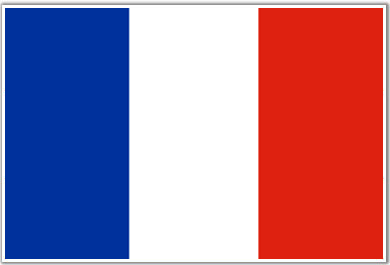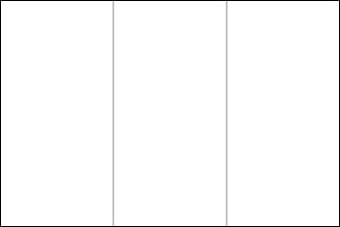Download blank France flag image for kids to color
About French Flag
The French flag features three equal bands of blue, white, and red. The bands are vertical and the blue band is featured on the hoist side. In 1790, following the French Revolution, the national color of France, white, was teamed with the colors of the French militia, blue and red, to form the tricolor that would represent France for years to come. The French tricolor was officially adopted on February 15, 1794. The French flag was designed by Jacques-Louis David. The naval ensign of France is the same tricolor but with a different aspect ratio.
French Flag Evolution:
The French flag dates back to the days of the French Revolution. Prior to the revolution, France had traditionally been represented by a plain white flag – a sign of purity and strength. Members of the Parisian militia that stormed the Bastille on July 14, 1789, had worn blue and red cockades on their hats. To give the blue and red a national appeal, Marquis de La Fayette, the French leader suggested including a white cockade in the uniform of the National Guard. In 1790, the French Constituent Assembly approved the tricolor flag but the sequence was red, white, and blue. By 1794, a resolution was passed to adopt the tricolor in its current form – blue, white, and red. During the reign of Napoleon I the tricolor became prominently used. The Bourbon dynasty, however, did away with the tricolor and replaced it with the plain white flag of earlier times. The July Revolution of 1830 brought yet another turn. Louis-Philippe renewed the use of the tricolor and this time the French identified with the flag which became a national ensign. The establishment of the Third Republic in 1870 did nothing to diminish the stature of the tricolor flag. Later, the French constitutions of 1946 and 1958 officially instated the current tricolor flag of France.
Standard Specifications of the French Flag:
The flag aspect ratio of the France flag is 2:3. The naval ensign bears the same colors as the national flag but used a width proportion of 30:33:37 (blue:white: red). The Pantone shades used to represent the French national flags are the ‘Reflex Blue’ and the Pantone Red 032. These shades replaced the darker shades of blue and red and were adopted by Valery Giscard d’Estaing. Napoleon I had changed the naval ensign to feature equal bands. The white, being the brightest of the three colors, seemed wider. Beginning in May 1853 the width proportion of 30:33:37 was reinstated.
Resemblance:
The French flag closely resembles the flag of Belgium. The Belgian flag features three vertical and equal bands of black, yellow, and red instead of the French colors – blue, white, and red. The flag of Chad and Ireland also resembles the French tricolor in design. The Irish flag features three vertical and equal bands of green, white, and orange. The flag of Chad resembles the French flag closely and the three colors on the Chad flag are blue, yellow, and red. The Luxembourg flag also features red, white, and blue, but the stripes are horizontal and are shades lighter than the French flag. The design of the French flag has influenced the flags of many nations of the world including the flags of Belgium, Italy, Mexico, Ireland, and Romania.
| National symbol(s): | Gallic rooster, fleur-de-lis, Marianne (female personification) |
| National colors: | blue, white, red |
| National anthem: | |
| Name: | “La Marseillaise” (The Song of Marseille) |
| Lyrics/Music: | Claude-Joseph ROUGET de Lisle |
Fact about France Flag |
|---|
| Country | France |
|---|---|
| Designed by | Jacques-Louis David |
| Adopted | First as Design: 15 February 1794; As Napoleon army flag: 1812; Readopted July 1830 |
| Design and Colors | A vertical tricolor of blue, white, and red |
| Size Ratio | 2:3 |


